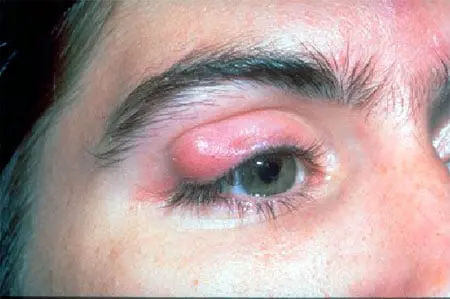
Contents
An eye chalazion is a small lump that develops in the eyelid. They are not quite painful and do not last more than a couple of weeks. The Chalazia or Chalazion (which is pronounced as kuh-lay-zee-on) is like a lump or bump on the inner side of your eyelids. It’s mostly painless slowly enlarging on the eyelids. It causes inflammation in meibomian glands (which is also known as the small oil glands) around the eyelids and blocks tear glands underneath the upper lid.
Your meibomian glands are responsible for keeping the eyes moist. When one of these glands can not drain properly then the Chalazia is developed. It is basically a chronic granulomatous enlargement of the meibomian glands of the eyelids.
These are the causes for the occurrence of an eye chalazion:
An eye chalazion can be caused by a blockage in one of the Meibomian glands, that are present in the upper and lower eyelids, these glands produce oil that lubricates the surface of the eye which makes it moist. A blockage in the glands can cause inflammation leading to eye chalazion. People with a disease called rosacea are prone to getting eye chalazion. During rosacea, the face has redness and swollen bumps under the skin. People with acne, chronic blepharitis, and viral conjunctivitis are prone to eye chalazion.
Chalazia are more commonly diagnosed in people with inflammatory conditions like seborrhea, acne, rosacea, chronic blepharitis, or long-term inflammation of the eyelid.
Following are the symptoms of an eye chalazion:
With just a few simple steps, you can avoid the recurrence of chalazia.
Eye chalazion is a very common eye ailment but it is easily treatable. Right medications can treat it properly without leading to any complications.
An eye chalazion is often confused with an eye stye because they look quite similar in appearance. Both of them are limps that can appear in the eye area. An easy stye is simply bacteria in an exocrine gland, but sometimes that tiny irritation can evolve into full blockage of the gland. This is often another potential complication called a chalazion, and it can get very large and painful, even affecting your vision. It’s also possible to spread the infection to the remainder of your eyelid, cheek, or other parts of your face. Cellulitis may be a danger here. The overwhelming majority of the time you won’t need to worry about this, but it doesn’t hurt to remember and be on the lookout.
A chalazion is a lump that is on the eyelid caused by a blocked gland while a stye is caused by an infected gland or follicle.
Eye chalazion can be diagnosed by an eye doctor. They take a close look at the lump on the eyelid and will ask about your symptoms to determine if the lump is an eye chalazion or a stye.
For an eye chalazion, the doctor can tell you the best way to treat it before it leads to any further eye complications. Warm compressions are a way to treat eye chalazion. Your doctor will tell you the right way to apply warm compresses to your eyes to get rid of the eyelid bump.
Medications are also another way to treat eye chalazion. Your doctor can prescribe a topical medicine to treat your chalazia. Oral medicines are also suggested sometimes to reduce the risks involved with chalazia.
The surgical procedure can also be used in some cases. The small eyelid bumps do not require any treatment but sometimes the blockage which causes chalazia does not heal and leads to complications. If the bump is growing larger, the doctor may suggest, surgery to treat it.
The eye surgeon will use anesthesia to numb the area around the eye before making an incision and then clear the contents of the bumps from underneath the eyelid. There is another procedure to treat chalazia. By injecting a corticosteroid, you can get rid of the eyelid bump.
At home, it is important that there is no squeezing or popping of the chalazion as it may lead to further complications. You can do the following at home to increase the healing process.
Warm compresses to the affected eye can help soften any hardened oil blocking the gland ducts. This helps the ducts open and drain more easily, which can reduce irritation. To make and use a warm compress:
Gently massaging the eyelids for a few minutes each day can help the oil ducts to drain more easily. But be very gentle if you are trying this, and don’t massage it for too long; rough rubbing is going to be the other of helpful.
Before doing so, make sure that your hands are clean to reduce the risk of any infection.
you can use a warm teabag as an alternative to a warm cloth. The tea bag is hygienic and stays warm for a longer period of time. A tea bag can give instant relief from the pain but don’t use it for internal stye or chalazion as it may cause some problem if the eye if tea water goes inside the eye.
Visit our eye care center Eyemantra Care for proper tests and treatment by well-trained and experienced ophthalmologists. Contact us on: Ph:+91-9711115191 or Even you can mail us on eyemantra1@gmail.com.